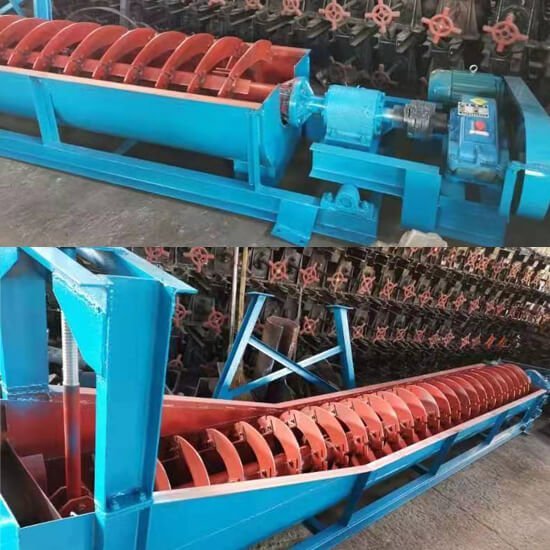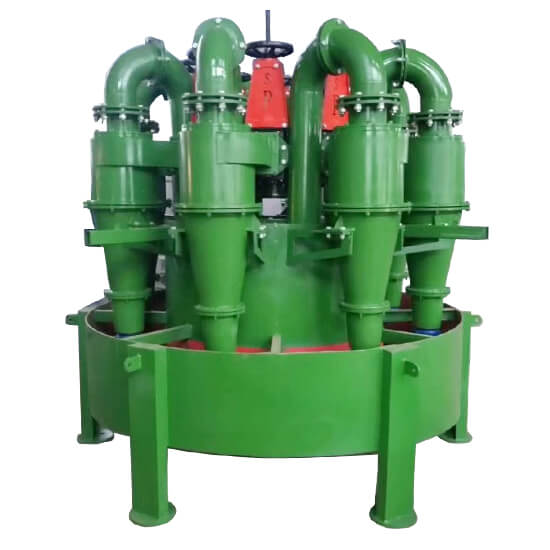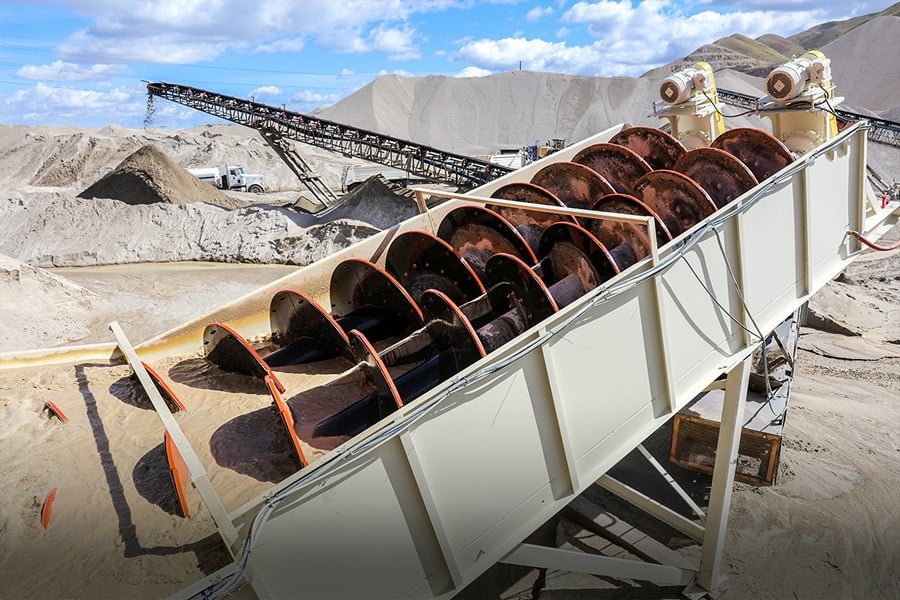In the beneficiation process, the purpose of the classification operation is to effectively separate the coarse and fine particles, which not only avoids the over-smashing of fine-grained minerals, reduces unnecessary energy consumption, but also makes the coarse-grained minerals return to the mill to be effectively crushed again. . The quality of the grading operation will directly affect the production capacity of the grinding equipment, the effect of the finished product, and the technical and economic indicators such as the grade of the concentrate and the recovery rate in the subsequent sorting operation.


A spiral classifier and a hydrocyclone are the two main classification equipment. For decades, the spiral classifier has been widely used in ore dressing plants as first-generation grading equipment. As second-generation grading equipment, hydrocyclones quickly occupy a place in the grading equipment of the concentrator due to their small footprint and high classification efficiency. Many people are puzzled since both are the main classification equipment; what is the difference between the two? Which type of classification equipment should I choose?
1. Granularity of processed materials
Common spiral classifiers include high weir type and submerged type. The high weir type is usually used for coarse-grain classification, and the diameter of the overflow particle size of the classification is generally greater than 0.15mm. The submerged type is suitable for fine particle classification, and the overflow particle size of the classification is generally less than 0.15mm.
Compared with these two classifiers, the hydrocyclone has a better classification effect when processing finer-grained materials (the separation particle size range is generally 0.3-0.01mm).
2. Floor area
Obviously, the footprint of the hydrocyclone is significantly smaller than that of the spiral classifier. Usually, the area of the hydrocyclone is only 1/30~1/50 of the spiral classifier. The equipment footprint requirements also limit the application of spiral classifiers to a certain extent.

3. Classification efficiency
Whether in classification efficiency or product accuracy, spiral classifiers are better than hydrocyclones. A large part of the reason is that if the pressure of the hydrocyclones does not meet the standard, the final material discharge position will change, greatly affecting the efficiency of its classification. The spiral classifier mainly rotates at a low speed by the spiral to stir the pulp to make the fine particles suspend to the top, flow to the overflow weir and overflow, and the coarse particles sink to the bottom of the tank, and are conveyed by the screw to the discharge port as returned sand. . The hydrocyclone needs to be discharged on the side opposite to the inlet; that is to say, once the pressure is not up to the standard, the material stratification will be disordered, and the material cannot be discharged from the discharge outlet normally.
But this is not absolute, especially when the classification particle size is very fine (such as 0.037mm), the classification efficiency of the hydrocyclone is significantly higher than other equipment to be classified.
4. Operational complexity
The spiral classifier is widely used mainly because of its simple structure, stable operation and easy operation. It is also because of its simple operation process and stable working status, which not only greatly reduces the funds for maintenance and replacement of equipment but also guarantees the completion time, making the graded operation of materials more secure. In addition, its easy-to-operate feature allows operators to perform normal operations on the machine with only short-term training. In other words, it has relatively low technical requirements for operators.
The operation of the hydrocyclone is more complicated, and the feeding pressure, concentration and particle size will greatly affect the classification index, so the accuracy of the operation is required to be high.
5. Investment cost
Regarding equipment investment, the equipment price of hydrocyclones is lower than that of spiral classifiers. However, in addition to its own equipment, the hydrocyclone needs a series of necessary auxiliary equipment in the classification process, such as distributors, valves, pumps, etc., which increases part of the equipment investment.
Regarding maintenance costs, the main wear parts of hydrocyclones are linings and overflow pipes. Of course, the frequency and degree of wear are caused by factors such as material size, shape, and solid content. Therefore, the service life and maintenance cost can only be accurately obtained in actual plant selection practice.
The maintenance of the spiral classifier is mainly to replace the spiral liner and other daily maintenance. However, because the lining material is relatively expensive, its purchase and maintenance costs are relatively high. In general, the investment price of spiral classifiers is higher than that of hydrocyclones.
Summarize
The classifier equipment, including the spiral classifier and hydrocyclone, cooperates with the grinding equipment in the beneficiation production line to jointly provide ore of the appropriate size for the separation operation. The choice of any beneficiation equipment will not be unilaterally decided, it must be the result of comprehensive consideration. This helps improve production efficiency and obtains a reasonable return on investment for the processing plant.